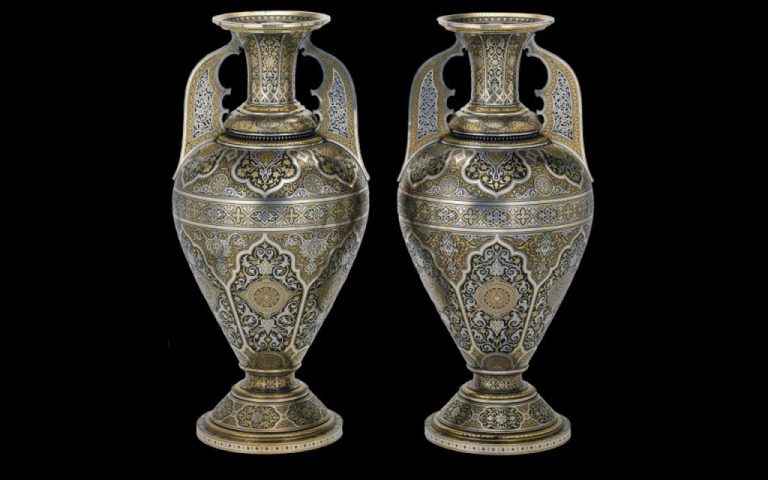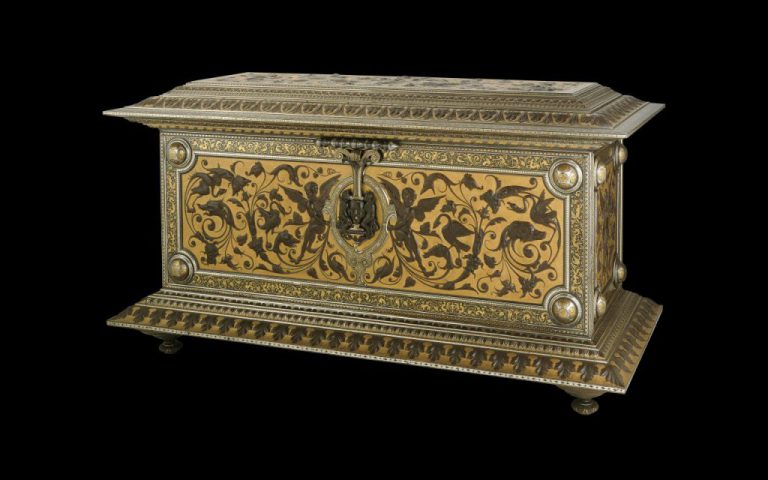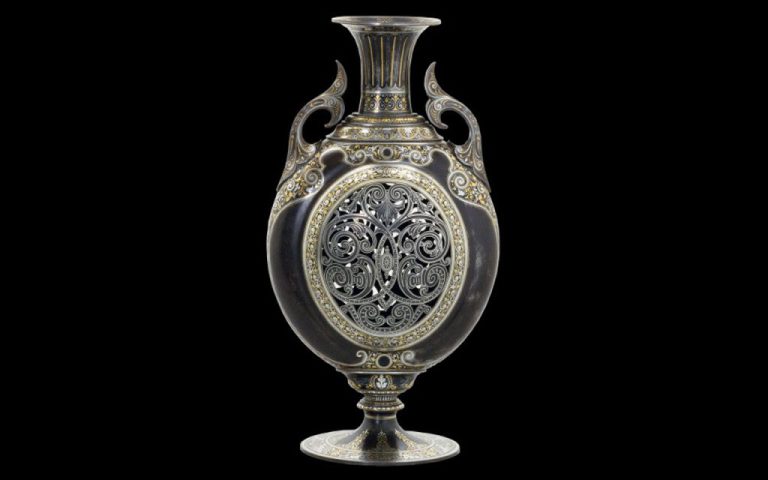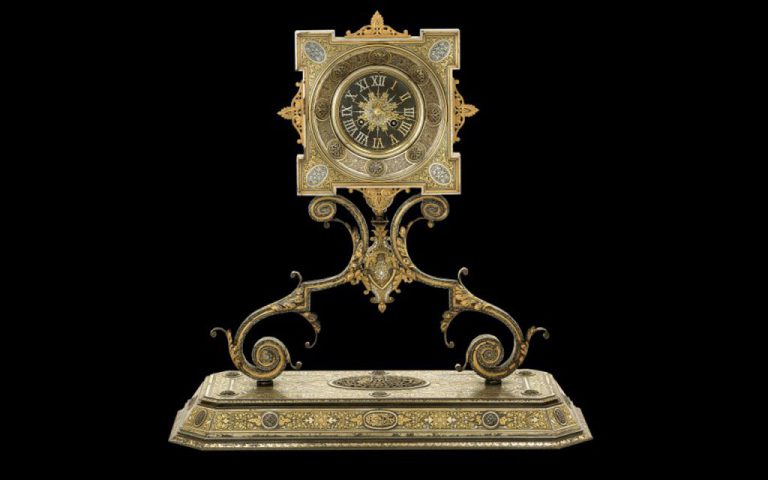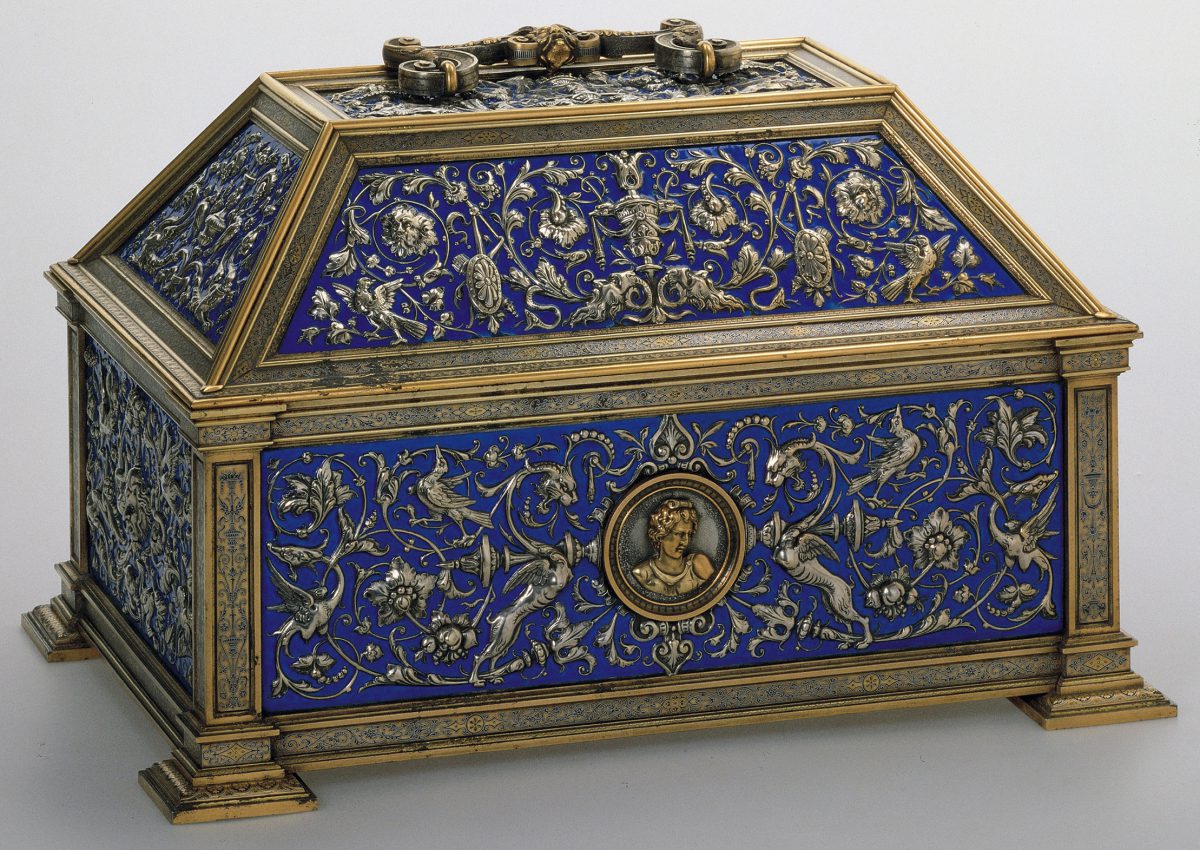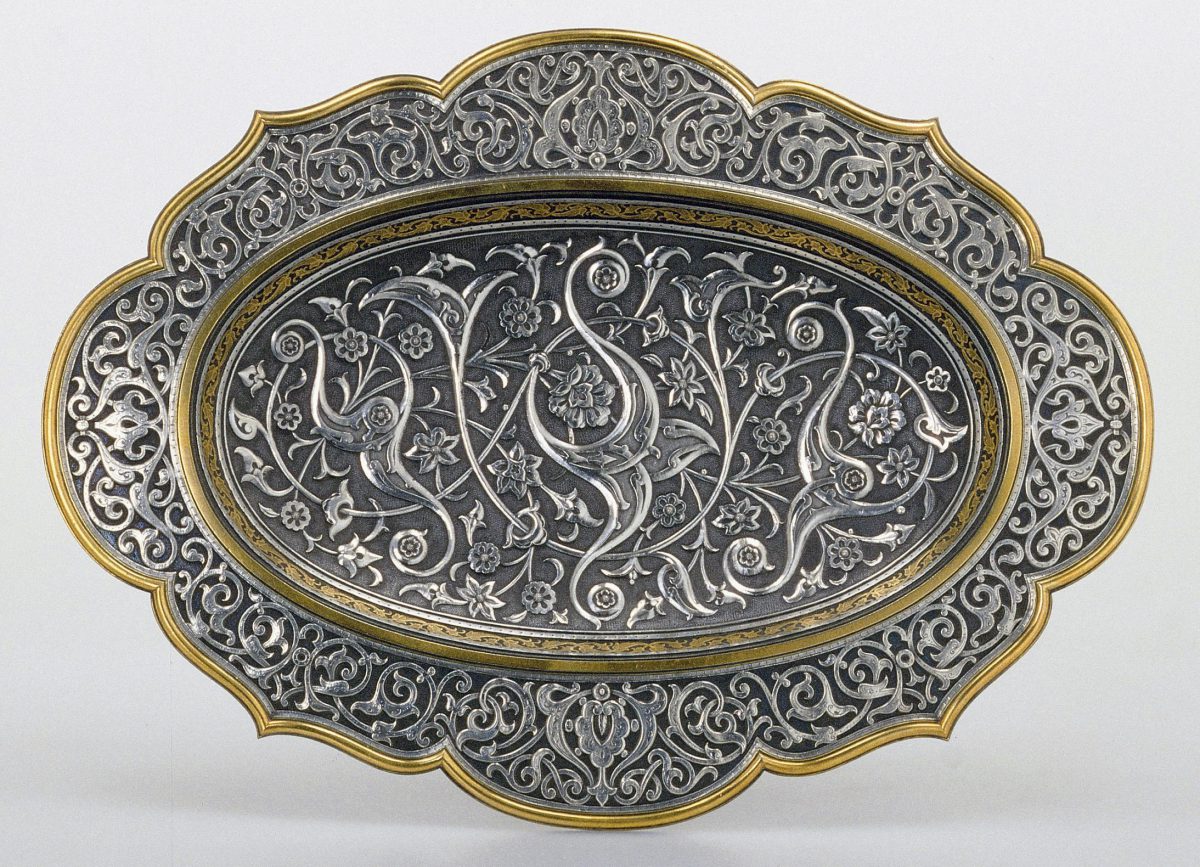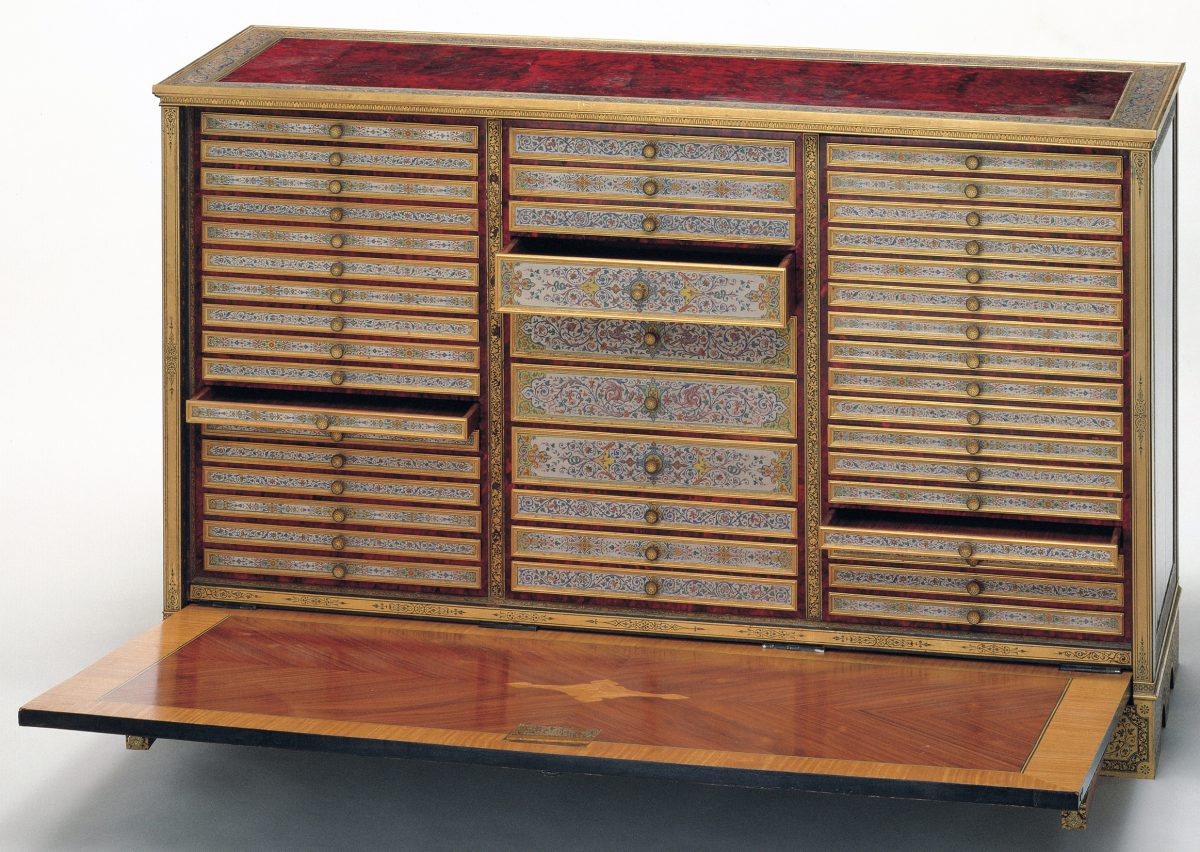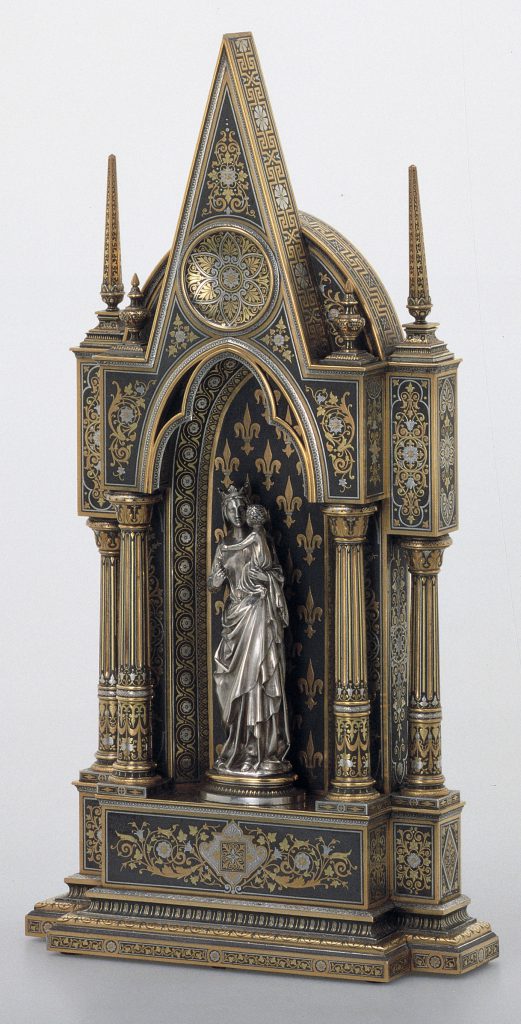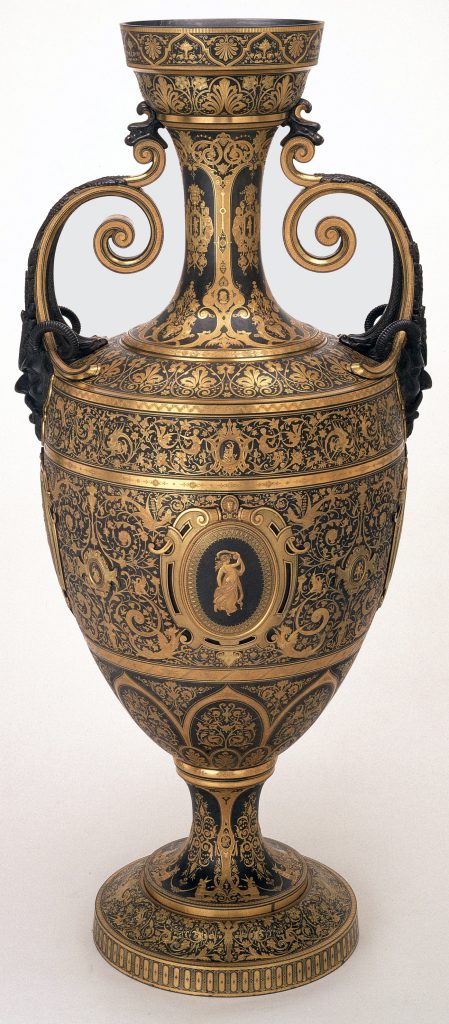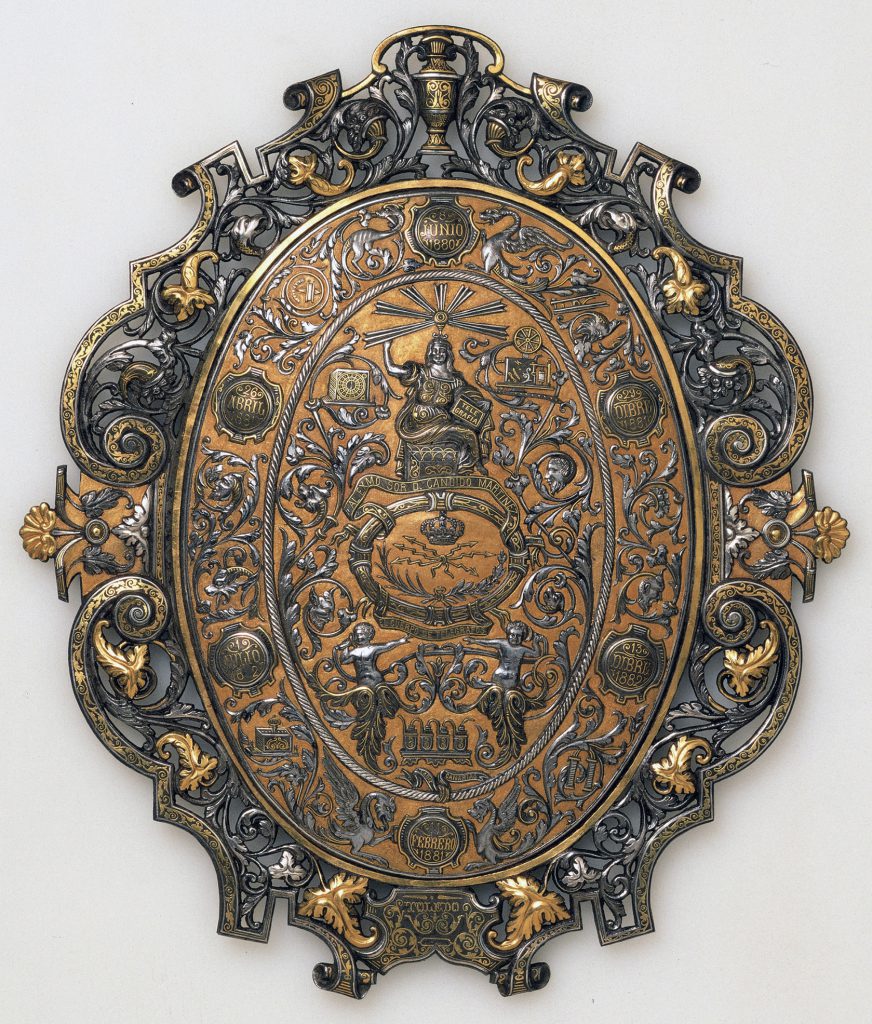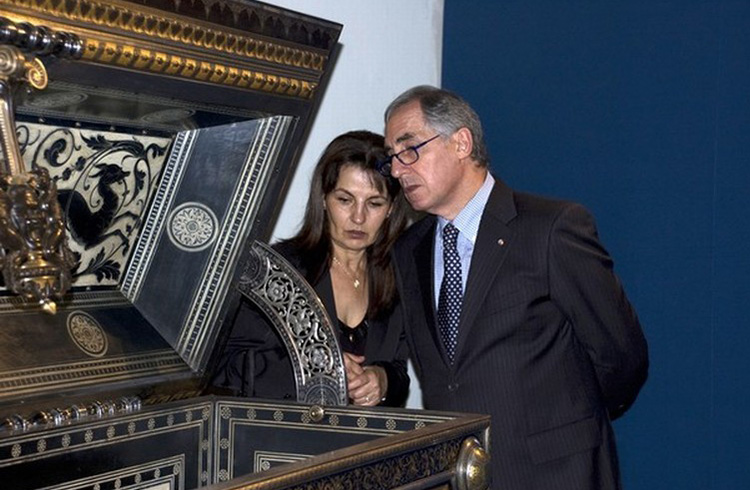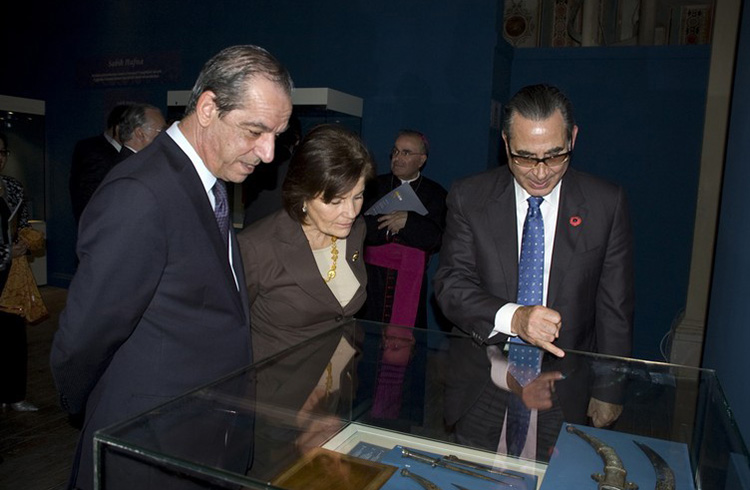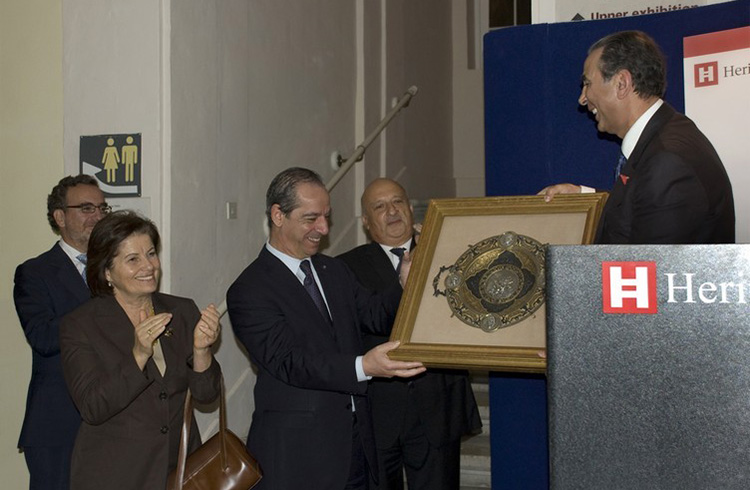-

Pair of Iron Urns
height 108 cm
Spain, Eibar
-

Iron Cassone
121 x 201 x 86 cm
Spain, Eibar
-

Black Iron Vase
height 41 cm
1870-1880 Spain, Eibar
-

Iron Table Clock
55.7 x 58 (base) x 22.7 (clock) cm
circa 1880 Spain, Eibar
-

Bronze Gilt and Enamelled Casket
42 x 61.5 x 37 cm
Spain, Eibar
-

Iron Salver
41 x 29.6 cm
1875-1880 Spain, Eibar
-

Writing or Document Desk
75.5 x 123.5 x 42.5 cm
Spain, Eibar
-

Iron Shrine with Virgin and Child
47.3 x 25 cm
Spain, Eibar
-

Handled Urn
height 157 cm
1900-1920 Spain, Eibar
-

Commemorative Plaque
28 x 23.7 cm
circa 1883 Spain, Toledo
Spanish Damascene Metalwork (1850 – 1900)
The preservation of damascening in Spain was almost entirely due to the genius of a single family, the Zuloagas. The Khalili Collection of Spanish damascene metalwork contains some the most important pieces commissioned by the great 19th-century English collector Alfred Morrison from Plãcido Zuloaga (1834–1910), the supreme damascener of that family . The Morrison pieces, such as the magnificent casket and pair of alhambra-shaped vases from Fonthill House, establish a benchmark by which we may evaluate all that follows. With over 100 pieces, 22 of which are signed by Plácido Zuloaga himself, the collection provides an excellent perspective on the art and industry of Spanish damascening during the latter half of the 19th century.

